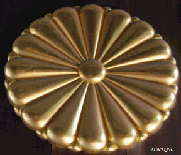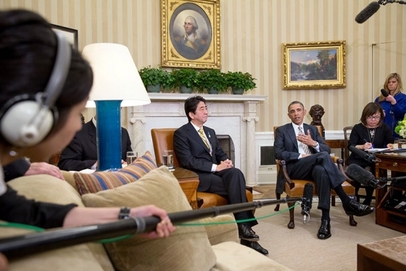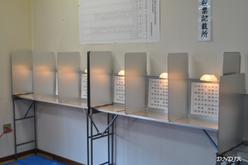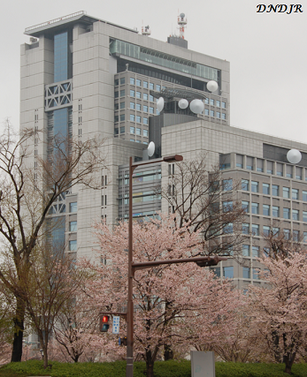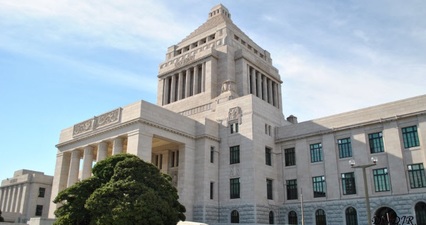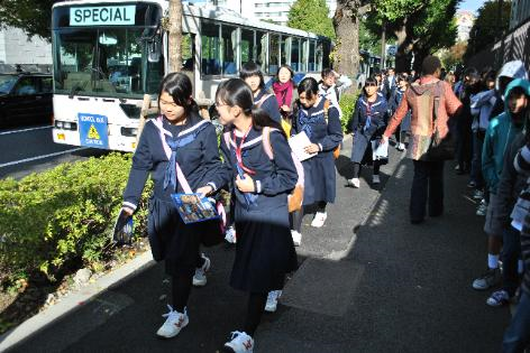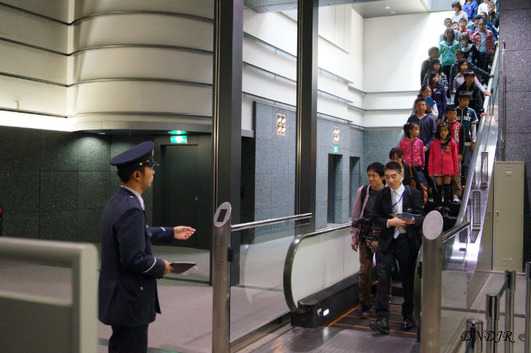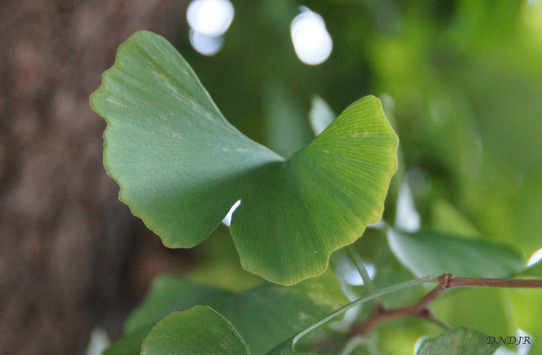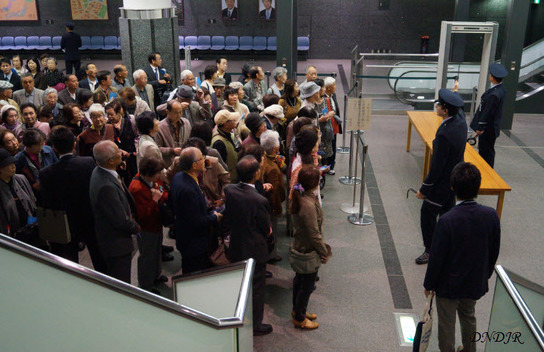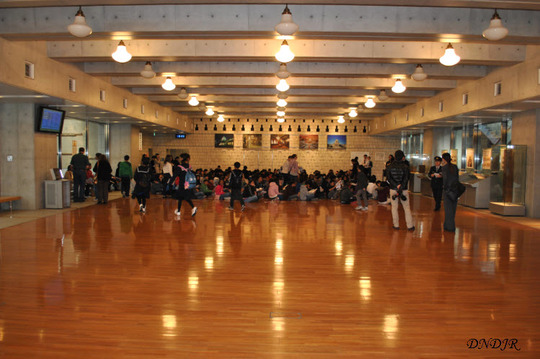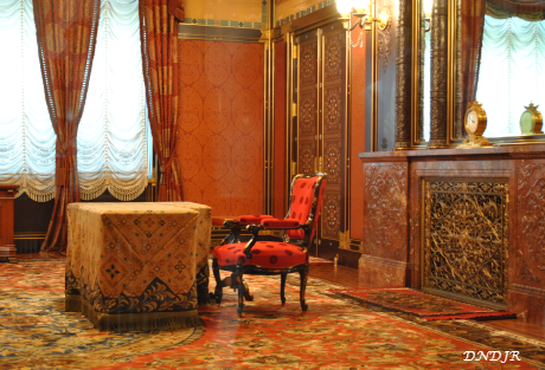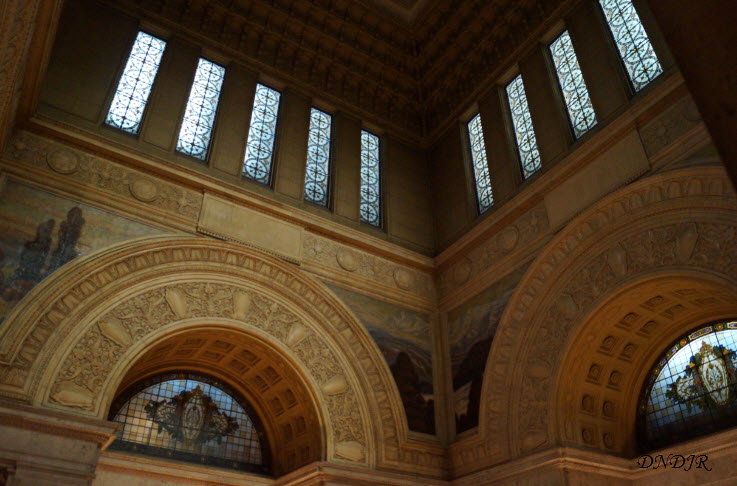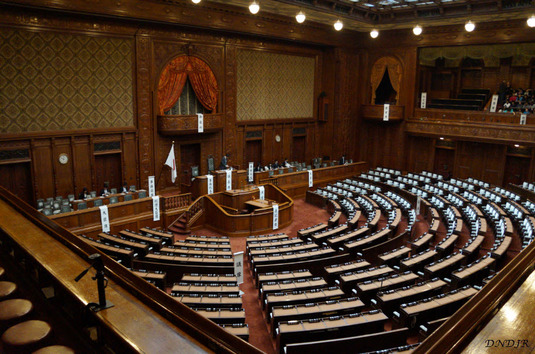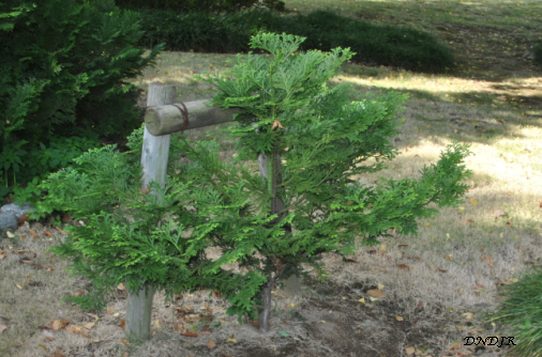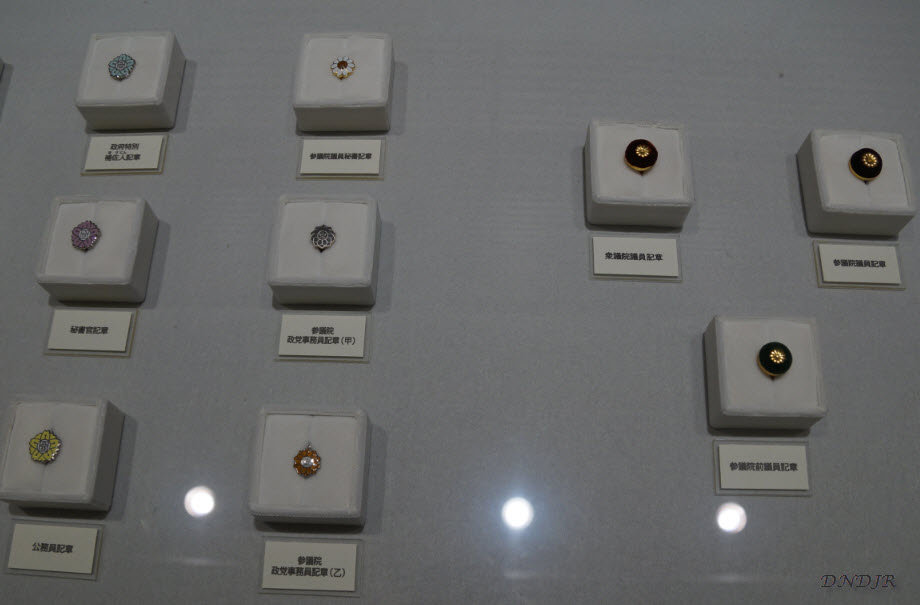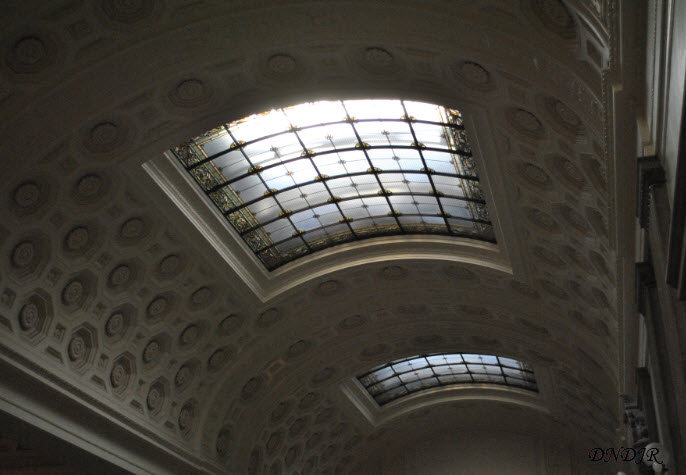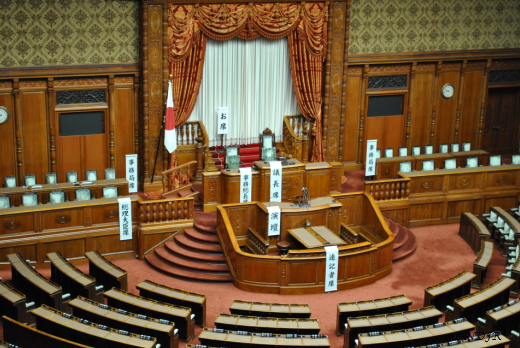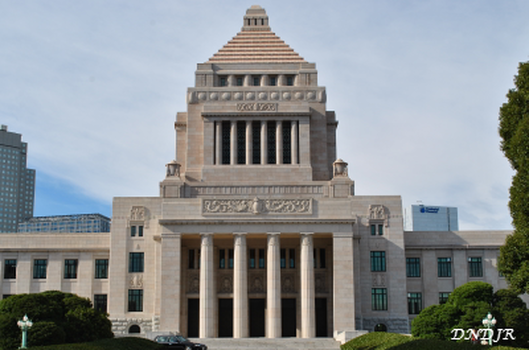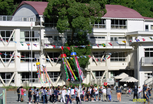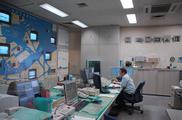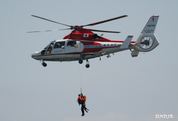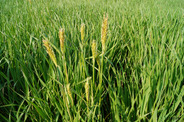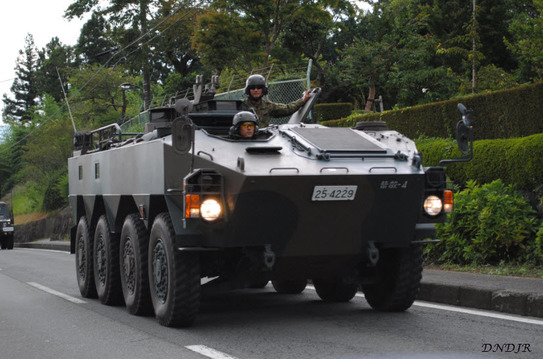Government in Japan
Japan’s current constitution dates back to 1947. It was heavily influenced by the postwar occupation forces and reflects many aspects of American and European government. The constitution retained the basic parliamentary structure that existed prior to World War II. But it enacted two major changes. First, it took away most of the power of the Emperor. The constitution established the Emperor as a "symbol of the state.” Second, it renounced Japan’s right to declare war (Article 9). This makes Japan the only country in the world to give up its right to declare war. The approximately 50,000 American military personnel stationed in Japan help to ensure Japan's safety from foreign aggression.
|
Japan's Government Structure
The basic structure of government in Japan is similar to governments around the world. It can be broken down into three basic levels- national government, prefectural government, and local government. Each level is responsible for different functions and responsibilities. The national government is centered in Tokyo (both a prefecture and the capital city). The national government includes the Office of the Prime Minister, the Diet, and the national court system. Japan’s 47 prefectures each have a capital city where they attend to the affairs of their residents. The prefecture plays a major role for citizens in that it manages the health care and police services. The capital city of each prefecture is usually the largest city in the prefecture. On the local level the city government runs government services for city and town residents. For larger cities, the city is broken down in to wards called ku. Each ward has its own government building and houses the services for its residents. This is similar to city hall in other countries. The local fire and police stations are usually located close to the ward government building. |
The Diet - Japan's Parliament
|
Basic Facts About the Diet Building
Construction of the Diet building was completed in 1936 The House of Councilors chamber is located in the north wing The House of Representatives is located in the south wing The Emperor's room is located near the center of the Diet and is used by the Emperor when he opens new parliamentary sessions. The Emperor is greeted in the room by Diet officials prior to entering the House of Councilors. |
Japan's legislative branch is referred to as the Diet. It is composed of a bicameral (two house) legislature. The House of Councillors, referred to as the upper house, has 242 members who serve terms of 6 years. The House of Representatives, the lower house of the legislature, has 480 members who serve terms of 4 years. The House of Representatives is said to have more power because it can pass legislation, even if it failed in the House of Councillors, with a two-thirds vote.
Tours of the Diet Building
The Japanese government frequently allows school sponsored student groups to tour the Diet. This is a great opportunity for
students to learn about the Japanese government structure and to see where the country's laws are made. Foreign students
who are living in Japan can also take a tour of the Diet and learn about the Japanese system.
These tours are usually coordinated by Diet members' staffers who make these tours possible.
|
|
|
The Prime Minister and The Cabinet
The Cabinet, with the Prime Minister as the head, is the executive branch of the Japanese government. Japan’s parliamentary form of government allows the political party with the most votes (or coalition of parties) to form a government. A coalition can be defined as a group of political parties with similar goals. The party or coalition Diet members then elect a member from the Diet to serve as the Prime Minister.
Most of the Prime Ministers in post-war Japan have come from the Liberal Democratic Party. The LDP tends to be conservative in nature. The
Democratic Party ruled Japan for a little over three years before the Liberal Democratic Party returned to power in December of 2012.
Once the Prime Minister is selected, he (no woman has been elected Prime Minister yet) then chooses the members of the Diet
who will serve in the Cabinet.
The Cabinet in Japan is similar to cabinets in other countries. Their purpose is to lead executive agencies and to advise the chief executive about issues related to their office. In addition to the various ministries, it includes the Cabinet Office and the Board of Audit. The majority of Cabinet ministers are required to be Diet members. Most citizens are technically eligible to serve in the Cabinet. Members of the military are specifically prohibited. All serve at the pleasure of the Prime Minister. This means that they can be asked to resign at any time. If this occurs, he or she returns to his regular Diet duties.
The executive departments in Japan are generally referred to as ministries.
Ministries serve the same function as departments in the American government. For example, in the United States the Department of State is responsible for interacting with foreign governments. The head of the Department of State is the Secretary of State. In Japan, the Ministry of Foreign Affairs (MOFA) is responsible for interacting with foreign governments. The head of MOFA is the Minister of Foreign Affairs. So while the titles may be different, they have similar roles in the national government.
The Cabinet, with the Prime Minister as the head, is the executive branch of the Japanese government. Japan’s parliamentary form of government allows the political party with the most votes (or coalition of parties) to form a government. A coalition can be defined as a group of political parties with similar goals. The party or coalition Diet members then elect a member from the Diet to serve as the Prime Minister.
Most of the Prime Ministers in post-war Japan have come from the Liberal Democratic Party. The LDP tends to be conservative in nature. The
Democratic Party ruled Japan for a little over three years before the Liberal Democratic Party returned to power in December of 2012.
Once the Prime Minister is selected, he (no woman has been elected Prime Minister yet) then chooses the members of the Diet
who will serve in the Cabinet.
The Cabinet in Japan is similar to cabinets in other countries. Their purpose is to lead executive agencies and to advise the chief executive about issues related to their office. In addition to the various ministries, it includes the Cabinet Office and the Board of Audit. The majority of Cabinet ministers are required to be Diet members. Most citizens are technically eligible to serve in the Cabinet. Members of the military are specifically prohibited. All serve at the pleasure of the Prime Minister. This means that they can be asked to resign at any time. If this occurs, he or she returns to his regular Diet duties.
The executive departments in Japan are generally referred to as ministries.
Ministries serve the same function as departments in the American government. For example, in the United States the Department of State is responsible for interacting with foreign governments. The head of the Department of State is the Secretary of State. In Japan, the Ministry of Foreign Affairs (MOFA) is responsible for interacting with foreign governments. The head of MOFA is the Minister of Foreign Affairs. So while the titles may be different, they have similar roles in the national government.
Japanese Government Ministries
Ministry of Agriculture, Forestry and Fisheries (MAFF) - Ministry of Defense (MOD) - Ministry of Economy, Trade and Industry (METI) - Ministry of Education, Culture, Sports, Science and Technology (MEXT) - Ministry of the Environment - Ministry of Finance - Ministry of Foreign Affairs (MOFA) - Ministry of Health, Labour and Welfare - Ministry of Internal Affairs and Communication - Ministry of Justice (MOJ) - Ministry of Land, Infrastructure, Transport and Tourism (MLIT)
Ministry of Agriculture, Forestry and Fisheries (MAFF) - Ministry of Defense (MOD) - Ministry of Economy, Trade and Industry (METI) - Ministry of Education, Culture, Sports, Science and Technology (MEXT) - Ministry of the Environment - Ministry of Finance - Ministry of Foreign Affairs (MOFA) - Ministry of Health, Labour and Welfare - Ministry of Internal Affairs and Communication - Ministry of Justice (MOJ) - Ministry of Land, Infrastructure, Transport and Tourism (MLIT)
|
The Ministry of Defense
Japan’s military forces were dismantled following World War II. But by the 1950s the threat of communism of East Asia had begun to grow. As this threat increased, and especially after the beginning of the Korean War, Japan slowly started to rearm. The first sign of change began with the creation of a National Police Reserve in 1950 and the gradual development of a coastal guard. In 1953 a National Safety Academy was established. A full-fledged military was created in 1954 with the creation of the self defense forces that we see today. The importance of the military was boosted in 2007 when it was elevated to cabinet level. The Ministry of Defense operates today with approximately 140,000 personnel, 150 major vessels, and nearly 450 aircraft. The relationship between the United States and Japan dates back to Commodore Perry’s first arrival in 1853. The relationship had its ups and downs as Japan began to slowly “open” and trade with the rest of the world. During the 1920s the relationship began to deteriorate drastically as Japan moved forces into China. It culminated with Japan’s bombing of Pearl Harbor, Hawaii on December 7, 1941. Following Japan’s surrender at the end of World War II, American occupation troops arrived and began the process of disarming the country. The occupation ushered in changes to the government, the role of the Emperor, and the lives of Japan’s people. With significant American oversight, a new constitution was written and went into effect on May 3, 1947. The new constitution contained one element that has shaped Japan’s relationship with its neighbors to this day- Article 9. This article states that “the Japanese people forever renounce war as a sovereign right of the nation…” A formal treaty ending the occupation of Japan was signed in San Francisco on September 8, 1951. The peace treaty was quickly followed by a defense treaty between Japan and the United States. This period also saw the creation of the Japan's Self Defense Force. As the name implies, its role is to defend the country. The Self Defense Force now ranks in the top ten percent in terms of size of world military forces. A revised treaty was signed in 1960 called the Treaty of Mutual Cooperation and Security. Its basic framework for the defense of Japan and eastern Asia continues to this day. |

